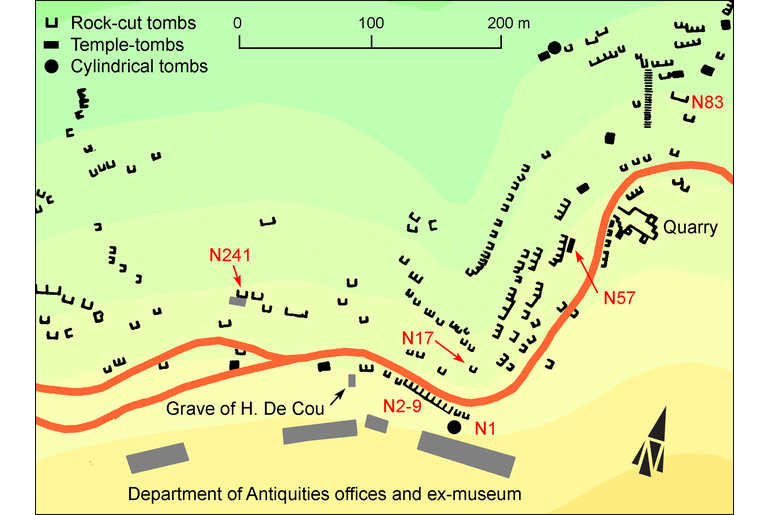Probably epitaph
IGCyr022500
Trismegistos ID: 6013
Source Description
Support
White marble base with plain mouldings on top and below, very much chipped off (whole base: 0.55; 0.3;0.385).
Layout
Inscribed on the face between the mouldings (0.50; 0.17;0.33).
Letters
0.025.
Place of Origin
Cyrene pleiades; HGL : probably from North Necropolis .
Date
Third century B.C. (lettering)
Findspot
Found in 1928 at Cyrene pleiades; HGL : Sanctuary of Apollo , N-W of Roman Propylaeum .
Last recorded Location
Seen by C. Dobias-Lalou in Shahat : Cyrene Museum , that is in 1979 on the terrace of the ancient Sculpture Museum and again in 1997 in the backyard of the new Museum.
Text constituted from
Transcription from stone (CDL).
Bibliography
Oliverio, 1930 Oliverio, G., 1930, Campagna di scavi a Cirene nell’estate del 1928, Africa Italiana3, 141-229 - see in bibliography , p. 193, n. 19, whence SEG Supplementum Epigraphicum Graecum, Leiden, then Amsterdam, 1923-1971, then 1979- - see in bibliography , 9.149; again Pugliese Carratelli SECir Oliverio, G., Pugliese-Carratelli, G., Morelli, D., 1961-1962, Supplemento Epigrafico Cirenaico, Annuario della Scuola Archeologica di Atene e delle Missioni Italiane in Oriente (ASAA)39-40 (= n.s. 23-24), 219-375 - see in bibliography , 85, from Oliverio's papers, as unpublished. Cf. Marengo, 1985 Marengo, S.M., 1985, Note di epigrafia cirenaica: edizioni ripetute, Annali della Facoltà di Lettere e Filosofia, Università di Macerata (AFLM)18, 145-162 - see in bibliography , whence SEG Supplementum Epigraphicum Graecum, Leiden, then Amsterdam, 1923-1971, then 1979- - see in bibliography , 36.1461.
Apparatus
French translation
Antipatros fils d'Euphris.
English translation
Antipatros son of Euphris.
Italian translation
Antipatros figlio di Euphris.
Commentary
When Oliverio published this base, he did not mention any hole for attachment on the upper side (which he did for other certainly votive bases found in the same area). In the SEG, the base was given as votive, probably in view of its findspot. In 1979 the base was still presented amongst a series of funerary bases, surmounted by a funerary statue, so that it was impossible to check the upper face. Neither was this possible in 1997 after its having been moved to the backyard of the new Museum. As the findspot was in the upper layers of an area that was not yet well defined at the time, we may as well suspect that the block had been brought from the nearest Necropolis to the Sanctuary for a re-use.
Creative Commons Attributions-NonCommercial 4.0 International License.
All citation, reuse or distribution of this work must contain a link back to DOI: http://doi.org/10.6092/UNIBO/IGCYRGVCYR and the filename (IGCyr000000 or GVCyr000), as well as the year of consultation.

